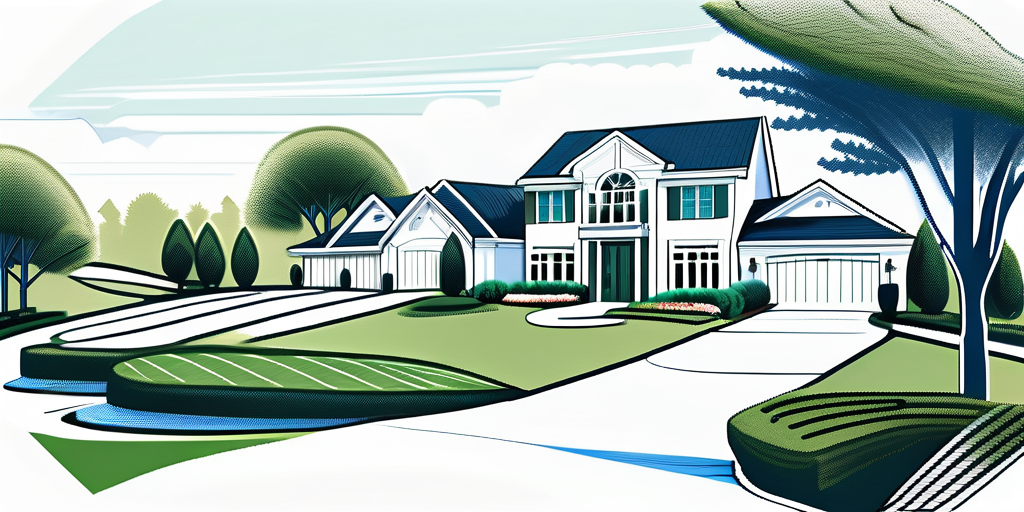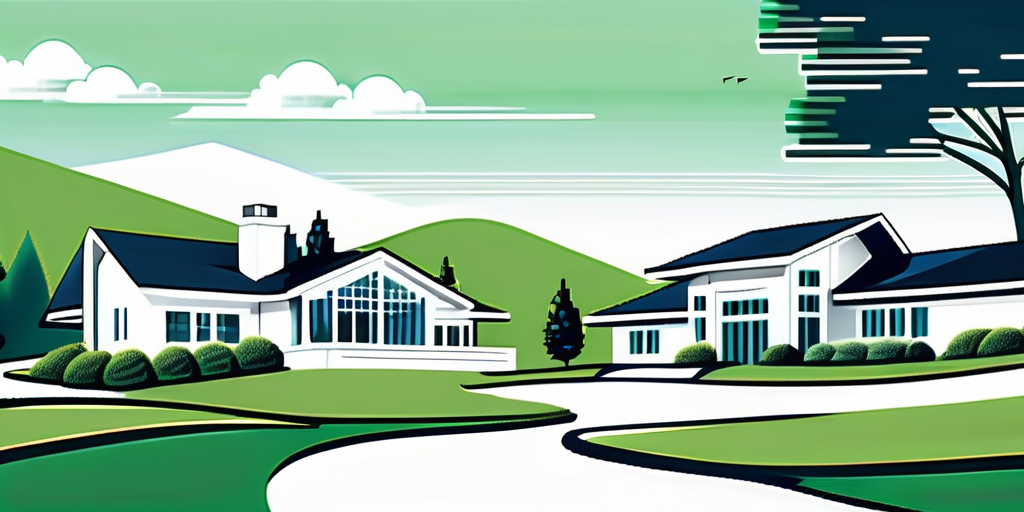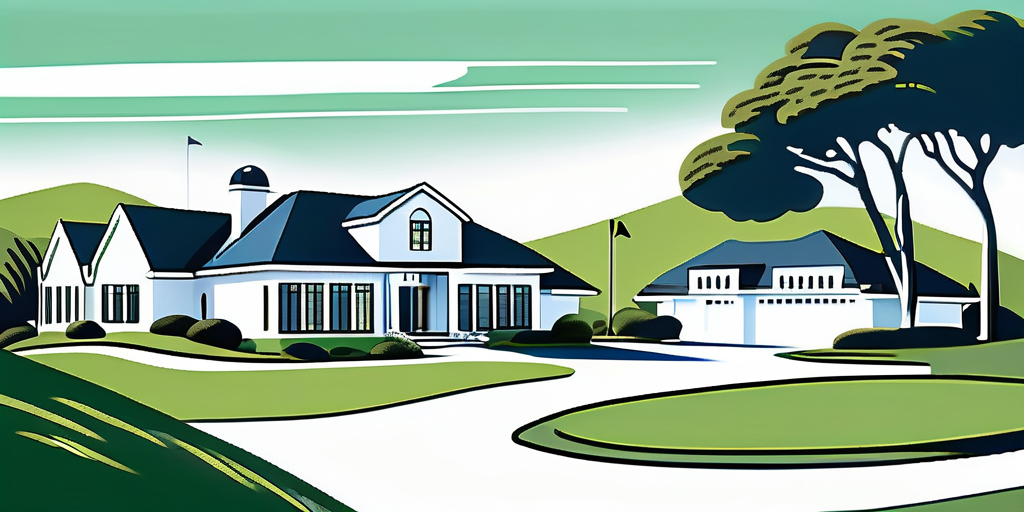
Golf club real estate can be an intriguing investment opportunity for many. Whether you're a passionate golfer or simply drawn to the appeal of luxury lifestyles, understanding the nuances of investing in this niche can lead to substantial rewards. In this comprehensive guide, we'll delve into various aspects of golf club properties, from their unique appeal to the legalities involved in investment.
Golf club real estate refers to properties that are part of or adjacent to golf clubs. This can include residential homes within golf course communities, luxury condos overlooking fairways, or standalone property investments that benefit from nearby golf facilities. But what makes these properties so attractive to investors?

Firstly, golf club properties often embody a luxurious lifestyle, combining beautiful landscapes with upscale amenities. Investors are drawn to the serene environment that comes with living near a golf course. There's something undeniably appealing about waking up to stunning views of greens and fairways, often coupled with a sense of exclusivity.
Additionally, golf club properties frequently attract affluent buyers who are willing to pay a premium for their lifestyle choices. This can lead to a more stable resale market. Whether it's for personal use or investment, owning a property within a golf community caters to a specific market segment that enjoys leisure, networking, and outdoor activities. Many golf communities also offer a variety of social events, from tournaments to themed dinners, which foster a vibrant community spirit and enhance the overall living experience.
When exploring golf club real estate, several key features make them stand out:
These features differentiate golf club real estate from standard residential properties, often making them a more appealing investment choice. Furthermore, many golf communities are designed with sustainability in mind, featuring eco-friendly landscaping and energy-efficient homes that appeal to environmentally conscious buyers. This trend not only enhances the aesthetic value of the community but also aligns with the growing demand for sustainable living options, making golf club properties even more desirable in today's market.
Moreover, the investment potential of golf club real estate can be significantly influenced by the quality of the golf course itself. Renowned courses designed by famous architects or those that host professional tournaments can dramatically increase property values and attract a higher caliber of residents. This allure is compounded by the fact that golf is often seen as a prestigious sport, further elevating the status of properties within these exclusive communities. As such, potential buyers are not just investing in a home; they are investing in a lifestyle that promises both enjoyment and social prestige.
Before diving into any investment, it’s crucial to evaluate potential properties thoroughly. Here, we’ll touch on several factors to consider when assessing golf club real estate opportunities.
Location is the backbone of any real estate investment. When it comes to golf club properties, proximity to major roads, airports, and urban centers can significantly influence desirability. Community layouts that facilitate easy access to the golf course and clubhouse increase the attractiveness to potential buyers.
Another important aspect to consider is the local demographics. Understanding who lives in the area and their purchasing habits will allow you to better gauge demand for real estate in the region. Ultimately, a prime location with easy accessibility can lead to increased property value and overall investment success.
Furthermore, consider the surrounding environment and amenities that enhance the lifestyle of residents. Are there nearby parks, shopping centers, or cultural attractions? The presence of these features can not only improve the quality of life for residents but also make the property more appealing to potential buyers. A vibrant community with a variety of activities can significantly boost the attractiveness of golf club real estate.
Next, consider the current condition of the property and any amenities offered. Are the homes well-maintained? Are the golf courses regularly updated? Dilapidated amenities can reduce property value and deter potential buyers. It's wise to evaluate both the property and the overall golf club, as an attractive course will entice more golfers to the community.
You’ll also want to consider the additional amenities offered, such as dining options, fitness centers, and recreational activities. Properties with comprehensive lifestyle offerings are much more enticing to buyers, ensuring a potential return on investment.
Moreover, the quality and variety of amenities can play a pivotal role in attracting a diverse clientele. For instance, properties that offer family-friendly features, such as playgrounds or community events, may appeal to younger buyers, while those with exclusive golf packages or spa services may attract retirees looking for a luxurious lifestyle. Assessing the demographic trends and preferences in the area can help you identify which amenities will be most beneficial for your investment.
Keeping an eye on current market trends and analyzing property values in your chosen location is vital. Look for data on recent sales, property appreciation rates, and general economic indicators for the area. A comprehensive market analysis will help illuminate the viability of the investment and what kind of growth you can expect in the coming years.
Speak with local real estate agents or check property listings to gain insights into market conditions. Understanding whether the market is in a buyer’s or seller’s phase can influence your buying strategy significantly.
In addition to these factors, it’s essential to stay informed about broader economic trends that may impact the real estate market, such as interest rates, employment rates, and local government policies. For example, if a new business hub is being developed nearby, it could lead to an influx of residents and increased demand for housing, thus driving up property values. Keeping a pulse on these macroeconomic indicators can provide a more comprehensive understanding of the potential risks and rewards associated with your investment in golf club real estate.
Financial considerations form the bedrock of any real estate investment decision. Here's a look at the main factors you should keep in mind.

The first step in evaluating golf club real estate is figuring out your initial investment requirements. These properties can come with a hefty price tag, so ensuring you have the proper financing in place is crucial. Consider various options such as conventional mortgages, investment loans, or even cash purchases if your situation allows.
Also, don’t forget to factor in additional costs like property taxes, association dues, and maintenance fees. Understanding your financial landscape upfront helps set realistic expectations for your investment journey. Furthermore, it’s wise to explore partnerships or syndicates, which can help distribute the financial burden and risk among multiple investors. This approach not only alleviates the pressure of a large upfront investment but also allows for shared expertise in managing the property effectively.
In addition to the initial investment, ongoing operational costs can add up over time. Property management fees, maintenance, and utility costs can impact your overall profitability. Be sure to create a detailed financial plan that outlines all potential expenses associated with owning golf club real estate.
On the flip side, understanding the potential returns on investment is equally vital. Many golf properties appreciate over time, and they can also generate rental income if you decide to rent them out. This dual-income stream makes golf club real estate a potentially lucrative investment. Additionally, consider the seasonal fluctuations in income, particularly if your property is located in a region with distinct tourist seasons. This can influence your cash flow and should be accounted for in your financial projections, allowing you to better prepare for leaner months.
Another significant financial consideration is taxes. Real estate investments can offer numerous tax benefits that can positively impact your profits. Deductions for mortgage interest, property depreciation, and any expenses related to property management are essential to factor into your overall financial calculations.
It’s advisable to consult with a tax professional experienced in real estate to ensure you are taking full advantage of available tax strategies, which can improve your overall return on investment. Additionally, understanding the implications of capital gains taxes when selling the property can help you strategize your exit plan effectively. Holding onto the property for a longer period may qualify you for lower tax rates, while reinvesting profits into another property can defer taxes altogether, allowing you to maximize your investment potential over time.
Understanding the legal landscape surrounding golf club real estate is equally important as navigating the financial side. There are numerous regulations and rules that can impact your investment.

Before purchasing any property, be sure to investigate property rights and restrictions. Some golf communities have strict guidelines regarding property usage and modifications. Familiarize yourself with any limitations that could affect your ownership experience.
Understanding these restrictions upfront can prevent future headaches and help ensure your long-term satisfaction with your investment. For instance, some communities may prohibit certain types of landscaping or require specific architectural styles that align with the overall aesthetic of the neighborhood. Additionally, restrictions may extend to the types of activities permitted on the property, such as limitations on short-term rentals or the use of recreational vehicles. Being well-informed about these aspects can help you make a more educated decision and avoid potential conflicts with neighbors or community regulations.
Part of being a responsible investor is understanding the zoning laws that apply to the property you’re considering. These laws dictate what can and cannot be done on your property and ensure that developments in the area comply with local ordinances.
Check with local zoning offices for any changes that may affect your investment. Understanding these aspects will help protect your investment and allow for potential growth or development opportunities in the future. Moreover, zoning laws can also influence the types of businesses that can operate nearby, which may affect your property value and the overall appeal of the community. For example, if a new commercial development is approved in the vicinity, it could enhance the local economy and increase property values, but it could also lead to increased traffic and noise, impacting your living experience.
Lastly, homeowners associations (HOAs) play a significant role in golf club communities. These organizations set rules and regulations that can influence property management, aesthetics, and neighborhood conduct. While having an HOA can help maintain property values, it can also impose restrictions that you need to be aware of when considering your investment.
Engage with existing residents or review HOA documents to grasp the regulations better. Doing so will ensure that your lifestyle expectations align with the community standards. Additionally, understanding the financial health of the HOA is crucial; inquire about their reserve funds, any ongoing legal disputes, or upcoming assessments that could impact your financial obligations as a homeowner. A well-managed HOA can provide valuable services and maintain the community’s appeal, while a poorly managed one can lead to frustration and unexpected costs for residents.
In summary, investing in golf club real estate can be a highly rewarding venture when approached with careful consideration of the various elements involved. From understanding the appeal and critical features to evaluating market conditions and navigating legal aspects, taking informed steps will aid in cultivating a successful and satisfying investment.